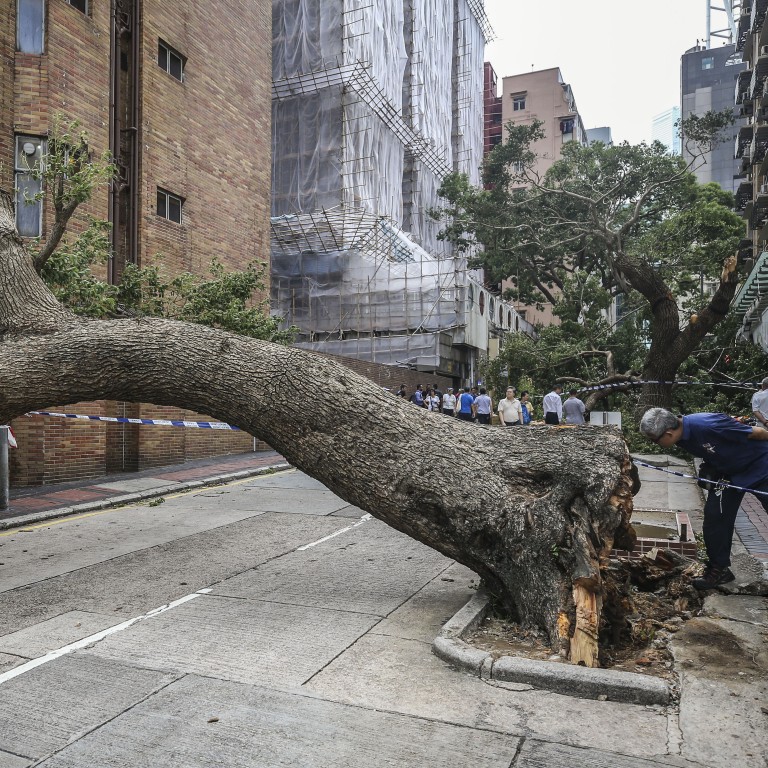
Typhoon Mangkhut caused havoc with Hong Kong’s trees because city doesn’t know how to plant them properly, say university researchers
- Study by Education University suggests shallow root system and poor quality soil to blame
- More than 60,000 trees were lost in severe storm last year
Researchers from the university said the tree management section of the Development Bureau had not done enough to prevent trees being felled by typhoons.
Limited space and poor quality soil weakened trees to the extent they could not withstand storm-force winds, according to research conducted by the university.
“This is because the way we plant trees is wrong,” said Professor Jim Chi-yung, the research chair of geography and environmental science.

Researchers studied more than 4,000 photos of around 2,000 trees in the city knocked down by the typhoon, and assessed issues with the trees by analysing the images.
Results showed many of the trees had small and short roots as they had not had enough space to fully develop.
“For big trees to be growing in such a small space, I feel their misery just by looking at it,” Jim said.
In one of the images showing a tree uprooted by the storm, the tree pit given for the plant to grow was shallow. The roots and soil were described by Jim as resembling a pancake.
The problem was made worse by the use of construction rubble as soil in some cases. The concrete found in the wastes turned the soil alkaline and affected the ability of roots to absorb nutrients and water.
“From the conclusion of our research, the government needs to do more,” said Professor John Lee Chi-kin, a co-leader of the research project.
As the world experiences climate change, weather patterns will become more extreme. Hong Kong needs to improve tree management for the plants to withstand intense winds and droughts likely to come in the future, the researchers said.
Typhoon Mangkhut, which hit Hong Kong in September last year, was the strongest storm since records began in 1946. The Development Bureau said 60,800 trees were uprooted, more than seven times the number of trees damaged by typhoons in 2017.
“This is a golden opportunity – the government should not just plant another tree in the same pit,” Jim said.
The researchers proposed several new methods to increase the volume of soil for each tree to be at least 1.8 cubic metre. This included joining the pits of two or more trees by a conduit that allows tree roots to share an enlarged space and connecting the tree pit to adjoining green spaces.
Eight months on, one Hong Kong stadium is yet to recover from Mangkhut
The university is also taking matters into its own hands by launching a two-year conservation programme aimed at educating students and residents on tree health.
A mobile app is being developed for residents to submit photos of trees that might have issues.
The programme hopes to provide a comprehensive view of the state of trees in Hong Kong and submit data to government agencies to improve tree management.

